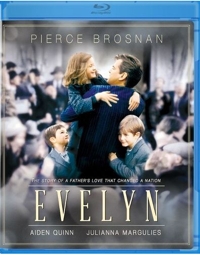Grade: B+
Sci-fi/Fantasy Adventure
Rated PG-13
Banter. When it works, it’s entertaining. But everyone’s seen enough news anchors trying to engage in amusing small talk to know how cringey it can get when it’s not working. And there are more than a few moments in Guardians of the Galaxy Volume 3when that happens. There are also times when the formula shines through and the gotta-save-Rocket plot can seem as familiar as the visual effects—so much so with the latter that you wonder if they weren’t in part an attempt to sync up with the Guardians of the Galaxy Cosmic Rewind ride at Disney’s Epcot.
As happens with most film series, you can have too much of a good thing. What was refreshing in the first installment can seem overdone by the third. That plus a final-act set-them-free sequence reminiscent of Indiana Jones and the Temple of Doom are the weaknesses of this third installment from writer-director James Gunn. Thankfully Gunn’s sense of character and a knack for storytelling and crackling energy help to compensate for those shortcomings. As a result, Volume 3 rockets into familiar territory, though it’s not as good as the first two installments.
The big plus is the Rocket back story. It feels unique to have a third film in a series play like an origin film, but that’s what viewers get in Guardians 3. You’ve heard by now that the story focuses on the sad and cruel practice of using animals for scientific and medical experiments, and that includes a very young Rocket. But while the experimentation and the caging of animals shown can evoke some strong emotions, they don’t compare with what you’ll feel when some of those critters are harmed by violence that’s more conventional in Marvel action films. With bad guys wanting to harm animals and children andthe good guys, it does play on the audience’s emotions. Gunn maintains the same tone here that made the first two films successful, and, apart from overdoing the banter, Volume 3 does a decent job of balancing the frightening with the fun.
You could watch Volume 3 as a stand-alone, but it will take you a while to figure out what’s going on, because the action picks up after the ending of Volume 2.
Quill (Chris Pratt) is still mourning the loss of Gamora and the Guardians are minding their own business when a galactic warrior appears and attacks them all, critically wounding Rocket (voiced by Bradley Cooper). The gang discovers that they can’t fully treat their friend because they found a “kill switch” that had been embedded in him by Orgocorp. So while Rocket’s life flashes before him (and us), the Guardians embark on a mission to find the switch’s override code and save their friend. There’s more, of course. What would a Marvel Universe film be without a little confusion?
In this one we get a mad scientist known as the High Evolutionary (Chikwudi Iwuji) who tries to get Rocket back in order to use him for additional cloning or some such thing. That would have been villain enough, right? But Gunn throws in a Sovereign high priestess named Ayesha (Elizabeth Debicki) and her warrior, Adam (Will Poulter), which poses a double challenge/threat, and then the Ravagers (Quill’s former gang) resurface to help the Guardians: Quill, Drax (Dave Bautista), Mantis (Pom Klementieff), Groot (Vin Diesel), Nebula (Karen Gillan), and an Alternate Gamora (Zoe Saldana).
As I said, the result is a film that’s still entertaining, but not quite up to the level of the first two in the series. Curiously, some scenes seem deliberately aimed at younger children. How else to explain the Wiggles or Teletubbies bright primary color space suits?
Guardians of the Galaxy Volume 3 is streaming now, but that won’t always be the case. If you’re a collector or you like to have control over what you watch and when you watch it, this Blu-ray combo or the 4K Blu-ray Combo is the way to go. The picture is stunning and the sound is theater quality. Strap on your seatbelts and get ready to rattle a few windows. This ride has no height requirement, but like the first two films it’s rated PG-13—this time for “intense sequences of violence and action, strong language, suggestive/drug references and thematic elements.”
Entire family: No (Age 10 and older?)
Run time: 149 minutes, Color
Studio/Distributor: Marvel/Disney
Aspect ratio: 1.85:1 and 2.35:1
Featured audio: English 7.1 DTS-HDMA
Bonus features: Includes digital code
Language: 5/10—Pretty average for a PG-13 film these days, with one f-bomb and a dozen or so lesser swearwords and epithets
Sex: 2/10—Some innuendo, comic flirtation, and vague references to sexual behavior, along with some bare-chested males and skimpy outfits
Violence: 6/10—Some minor characters are shot point-blank, one extra is blasted into charred oblivion, animals claw at people, people are injured in explosions, a character is shot in the leg, and there are fistfights, decapitations, gunfights, and knife fights, with blood in some
Adult situations: 3/10—There is one instance of drunkenness in a main character, one character who deals “meth,” and aliens seen using some sort of drug
Takeaway: The Marvel Universe keeps expanding, but with several of the key actors already saying they won’t do another Guardians film, it looks like it could be the end for a while























